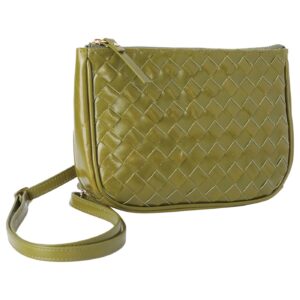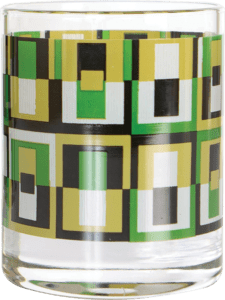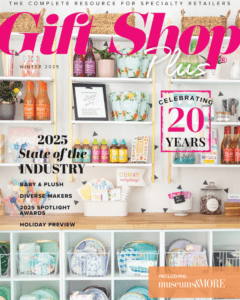Hospital Gift Shops: The Right Retail Prescription
The heartbeat of any health care facility, hospital gift shops benefit from a captive clientele, but they also have the tough task of merchandising to repeat customers, replenishing quick-turnover stock, and operating on a largely volunteer staff. Find out how these gift shops are keeping profits—and spirits—up.
The beep-beep of machines, the long and sterile hallways, the anticipation that hangs heavy in the air of the waiting rooms — hospitals can be scary places. But there’s always one area that’s guaranteed to be a respite: the gift shop.
“Hospital gift shops play a large role in the healing culture in a hospital, and many are the best-kept secrets in the retail world,” says Tim Herlich, manager of the Gift Shop at Evergreen, part of Evergreen Hospital Medical Center in Kirkland, WA.
“It’s a haven for people to escape,” says Terry Brooke of Vivo Health Marketplace at North Shore University Hospital in Manhasset, NY, where she’s the interim gift shop manager. “When people have that opportunity to step out of visiting a family member or loved one who’s sick, they can come into an area and sort of leave that at the door, so to speak. It’s a cheery atmosphere, it’s bright, it’s colorful, it’s friendly, it’s warm — it’s just a great place to disappear to.”
Gift shops don’t just boost morale, though — they also boost the bottom line of their host institution, sometimes significantly. “Ultimately, the gift shops in a health care environment tend to generate much higher dollars per square foot,” says health care retail consultant Mindy Thompson-Banko, who adds that sales can exceed $1 million a year.
The value of volunteer labor
One of the biggest factors that sets apart hospital gift shops from their more-traditional counterparts is the use of volunteers — most rely heavily on non-paid workers to staff the shop, and some are even entirely run by volunteers. “If you have people donating their time, it certainly allows you to support the hospital with the income from the gift shop to a much greater degree,” Herlich says.
Relying on volunteers can create its own set of challenges, though. Many volunteers are retired and understandably want to take time off to vacation or visit relatives, which can mean they fall behind on product knowledge while they’re gone. At Vivo Health Marketplace in New York, where the weather can be quite blustery in the wintertime, some of the volunteers aren’t able to come in when it snows, whereas an employee depending on the paycheck might exhaust more of his or her resources to make it to work.
To deal with what can be a lack of continuity with volunteers, Herlich says they focus on buying products that don’t require a lot of explaining or active selling. “We look for things that can sell themselves and have good point-of-purchase displays, and items that are not inaccessible to the basic customer,” he says. Besides, Herlich adds, that’s a good strategy for the audience, many of whom are under duress or are dropping in quickly. “A lot [of customers] are coming in under a stressful situation,” he says. “Whether they’re the patient themselves or they’re a loved one visiting someone in the hospital, there can be some anxiety there. You don’t want it to be too challenging to understand what we have to offer at the gift shop.”
Despite the fact that volunteers usually need to be managed in a different way than a paid employee would be, they’re a great asset to a gift shop, thanks to their enthusiasm for being there and genuine desire to connect with shoppers. “I’ve seen shops function extremely well with a motivated and well-trained volunteer base,” says Andrew Andoniadis, founder of Portland, OR-based Andoniadis Retail Services. A strong advocate for the use of volunteer labor, Andoniadis believes the best set-up is a paid manager, a paid employee or two, and an arsenal of volunteers.
Frequent visitors
Traffic in a hospital gift shop is predictably steady, and a sizable proportion of customers are hospital employees — in fact, this number can go as high as 80 percent, according to Cindy Jones, a speaker, consultant, and designer who heads retail consulting firm Cindy Jones Associates.
“It’s not unusual for some of them to go into the shop several times a week, not just a couple times a month or three times a month,” Andoniadis says. “There’s a lot of repeat business. Some people go in twice a day — they go in for a snack in the morning and go in again in the afternoon.”
Because of the number of employees shopping at hospital gift shops, payroll deduction is a key offering to boost business. The swipe of a badge for payment is much easier than carrying around cash or a credit card, especially for workers who are popping in while on break. “Employees appreciate being able to take advantage of the convenience of buying without cash up front and interest-free,” says Jones, who adds that employee payroll deductions can account for 40 to 50 percent of sales.
The type of hospital also affects the clientele — if it’s part of a large medical complex with many doctors’ offices, the employee visits may outnumber the drop-ins from patients and visitors. Those with big maternity wings will get more happily anxious family and friends than others. At the Cottage Place Gift Shop at Memorial Hospital in South Bend, IN, they cater to this demographic and prepare specially for the siblings of new babies by handing out a free rose that they can present to mom. Along with the flower, the shop’s staffers give the big brother or big sister advice about what to say to mom.
A heavy rotation
That steady traffic that many shops would dream of is, like many things, both a blessing and a curse. “The blessing is that we have a lot of repeat customers; the curse is that every time they come in, they’d like to see something new,” Andoniadis says.
A big checkmark in the “blessing” column is the chance to get a very good grasp on what the clientele wants and target the buying accordingly. “[Hospital gift shops] really have the opportunity to understand and customize their product assortment to their audience,” says Thompson-Banko, founder and president of Simply Retail Inc. “They get lots of feedback and lots of info from the same types of people over and over again.”
Major sellers across the board are what one would probably expect: plush, candy/snacks, balloons, and flowers. Women’s jewelry is gaining major steam, along with accessories. “With the economy the way it is, even [hospital] employees have pretty tight budgets,” Jones says. “If the gift shop can offer them a little bling or a silk scarf to punch up their outfits, then they’ll spend the money there.” Brooke has found this a great product category in which to experiment and offer a rotating selection, hand-picked by buyers who travel to New York City, to keep catching repeat customers’ eyes. “Somebody might come in one day and see a bunch of purses they don’t fancy, but they’ll come in a couple of weeks later and see five they like,” she says.
Keeping the price point reasonable is an important consideration for most hospital gift shops, given that visitors don’t generally go into this type of store looking to spend a lot of money. At the Gift Shop at Evergreen, the typical price tag is $10 to $30. “If it goes beyond $30, even if the customer is able to purchase it, it’s a little out of their expectation,” Herlich says. “They may buy 10 items at $10 or $20, but they’re not coming in for a large purchase, so we have to keep that in mind when doing our buying.”
Changing with the times
That doesn’t mean, however, that more expensive products can’t succeed in a hospital gift shop. “A lot of staff in a hospital really do earn a pretty good dollar,” Andoniadis says. “In the right atmosphere, higher-priced items can be sold. In newer stores where there is the space available, you can create a department of higher-end things where part of the merchandising of those higher-end things is less cluttered — higher-end stuff has to be merchandised in an ambience that enhances perceived value.”
One store experimenting with higher-ticket items is the Cottage Place Gift Shop at Memorial Hospital, which has joined forces with Best Buy to offer basic electronics in a partnership they’re calling Best Buy QUICK PICKS. The new venture stemmed out of Memorial Health System vice president of marketing and innovation strategy Diane Stover’s desire to update the store to reflect the way people live today. “You wouldn’t know that we had moved to an electronic age by looking at the [hospital’s] gift shops,” Stover says. “We hadn’t changed inventory.”
She first thought a vending machine, like the ones increasingly popping up in airports, would work, but that didn’t offer the flexibility in product changes that she was looking for. After consulting with the local Best Buy team, they decided the best option was to have a section of the store devoted to electronics including phone chargers, digital cameras, memory disks, and earbuds. “We’re supporting the connectivity that people are continuing to strive for,” Stover says.
Leading up to the launch in December, a television raffle prize in the window piqued the interest of passersby enough that Stover decided to actually carry four television sets in the store, all of which sold within a week. So far, the concept has been a hit with visitors and staff alike, who enjoy the convenience and gift-wrapping.
Although hospital gift shops are by and large very traditional, other stores are innovating as well, by exploring services like ordering through the TV in the hospital room, using personal shoppers to guide patients, and stocking up on healthy-living products. Healthy cooking, travel, and candy are all hot categories, as public consciousness shifts to holistic wellness and disease prevention instead of just treatment.
A sweet escape
In an effort to carry enough products to suit the needs of everyone who may walk through the door, hospital gift shops can often come across as cluttered. But even shops short on square footage can accomplish their goals in a clutter-free fashion with the right layout. Think it can’t be done? Consider airport gift shops, which are often pleasant, well-designed stores. Thompson-Banko points out that the two share a lot in common, including constant traffic, a built-in captive audience, and high dollars-per-square-foot figures.
Thompson-Banko worked with the Cottage Place Gift Shop when the store was forced to move because of the hospital reconfiguring the entryway. The result was a new name, new logo, and a new look, which features wood floors and a beach cottage kind of vibe. “We expect people to go in and feel like they’ve gotten away from the hustle and bustle of work or the medical situation they’re in,” Stover says. After just two months, revenue increased by nearly 40 percent.
Last year, Vivo Health Marketplace underwent a renovation to create a more modern, spacious layout that maximizes sunlight. The result is a comfortable, retreat-like space for employees, patients, and visitors to seek respite in. “The whole look of the store is different: It’s a lot brighter, it’s cheery. There’s not one day that goes by that we don’t have a customer comment that this is the nicest-looking gift shop they’ve seen in a hospital,” Brooke says. “When people come into the gift shop here, even though they might be carrying emotionally or mentally a heavy burden, people always come in with a smile, or if they don’t come in with a smile, they leave with a smile.”
For the extra revenue, the employee convenience, and, perhaps most important, the smiles that hospital gift shops can bring, they’re worth their weight in gold.











